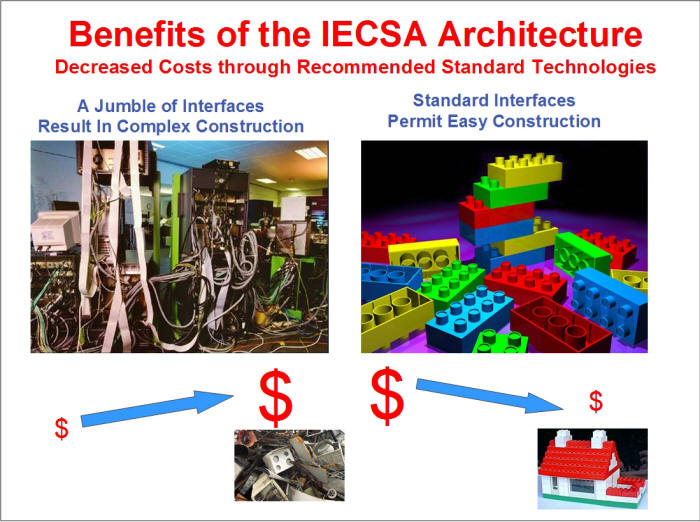The current information infrastructure of the energy
industry is plagued with legacy systems, proprietary protocols, stranded applications and ad hoc interfaces. This jumble impedes the
expansion and upgrading of computer systems, software applications, and new
equipment. The IntelliGrid Architecture, therefore, further identifies a recommended
approach to add new applications that are readily integrated and replace the jumble
of legacy interfaces with common ones; and thus provide lower cost solutions as
the information infrastructure grows in extent and complexity.
|

|
|
Figure
1: Benefits of Architecture:
Reduced
application costs from standardized ‘building blocks’
|
The specific benefits of IntelliGrid Architecture are:
§
Enabling advanced applications that will require a ubiquitous
infrastructure
§
Capital savings from standardized components that can be competitively
procured
§
Life cycle savings from lower maintenance costs due to standardization
§
Reduction in stranded assets from systems that can integrate
§
Ability to incrementally build upon first steps; and then scale up
massively
§
Reduced development costs by building on components of IntelliGrid Architecture systems
engineering
§
Robustness achieved from structured approaches to systems management
§
And finally, an architecture is necessary to consistently and adequately
secure the energy industry.